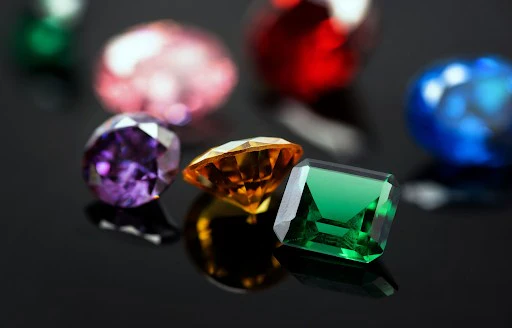Diamonds have long been revered as symbols of love, beauty, and luxury. These stunning gemstones have captured the hearts of many, whether in engagement rings, jewelry, or as collectibles. However, not all diamonds are created equal. Experts from Beyond Two Rings jewelry shop will delve into the three primary categories of diamonds: natural diamonds, lab-grown diamonds, and fancy colored diamonds, exploring their unique characteristics, benefits, and considerations.
Natural Diamonds
The Timeless Classic
Natural diamonds are formed over billions of years deep within the Earth’s mantle under extreme pressure and temperature. Their creation is a geological marvel, resulting in unique stones that are as varied as the Earth itself. Natural diamonds are often considered the epitome of luxury and tradition.
- Unique Origins: Each natural diamond has a distinct story, shaped by its unique formation process.
- Rarity: The geological processes that create natural diamonds make them rare, adding to their allure. The most sought-after diamonds often come from famous mines such as the Kimberley Mine in South Africa or the Argyle Mine in Australia.
- Value Appreciation: Natural diamonds tend to hold their value well over time, and certain rare stones can appreciate significantly.
- Environmental Impact: The mining of natural diamonds can lead to environmental degradation and ethical concerns, particularly regarding labor practices in some regions.
- Conflict Diamonds: Buyers should be aware of the “blood diamond” issue, where some diamonds are mined in war zones and sold to finance armed conflict. It’s crucial to purchase from reputable sources that adhere to ethical standards.
Lab-Grown Diamonds
The Modern Marvel
Lab-grown diamonds, also known as synthetic or cultured diamonds, are created in controlled environments using advanced technology, replicating the natural process of diamond formation. These diamonds have gained popularity in recent years due to their ethical implications and affordability.
- Identical Composition: Lab-grown diamonds possess the same physical and chemical properties as natural diamonds. They are made of carbon atoms arranged in the same crystal structure, making them indistinguishable to the naked eye.
- Cost-Effective: Typically, lab-grown diamonds are 20-40% less expensive than their natural counterparts, allowing consumers to purchase larger or higher-quality stones within the same budget.
- Ethically Sourced: Lab-grown diamonds eliminate the ethical concerns associated with natural diamond mining, as they are produced in controlled environments without the risk of conflict or exploitation.
- Perceived Value: While lab-grown diamonds are gaining acceptance, some still view them as less valuable compared to natural diamonds, which may affect resale value.
- Market Saturation: As technology advances and production becomes more widespread, the market for lab-grown diamonds is growing, which may influence pricing dynamics in the future.
Fancy Colored Diamonds
The Rare and Beautiful
Fancy colored diamonds are unique gems that come in a wide range of hues, from pinks and blues to yellows and greens. Their captivating colors and rarity make them some of the most sought-after diamonds in the world.
- Diverse Palette: Fancy colored diamonds are graded based on their hue, tone, and saturation. The most valuable colors are typically intense and vivid, such as blue, pink, and green.
- Rarity and Investment Potential: While colored diamonds are rare, certain colors—especially pink and blue—can fetch extraordinarily high prices at auctions, making them appealing for collectors and investors.
- Unique Aesthetic: The distinctive colors of these diamonds allow for creative and personalized jewelry designs, appealing to those looking for something beyond the traditional white diamond.
- Higher Price Point: Due to their rarity, fancy colored diamonds can be significantly more expensive than both natural and lab-grown white diamonds.
- Market Knowledge: The market for colored diamonds can be complex, requiring buyers to have a good understanding of color grading and quality to make informed purchases.
Diamonds: The Perfect Gift for Women
Diamonds are often associated with deep emotional connections. The phrase “diamonds are forever” encapsulates the idea that love is enduring and timeless.
When a woman receives a diamond, it signifies not just a gift, but a promise of lasting affection and commitment. This emotional resonance makes diamonds particularly meaningful, especially in the context of engagements and anniversaries.
Unlike many gifts that may fade or lose their appeal over time, diamonds are virtually indestructible. With proper care, they can last a lifetime and even be passed down through generations as cherished heirlooms.
This longevity adds to their value, making them not just a gift, but an investment in memories and family history. The idea that a diamond can be a part of a woman’s life story makes it an even more compelling choice.
Gifting a diamond is often seen as a thoughtful gesture that reflects the giver’s understanding of the recipient’s desires. The effort put into selecting the perfect diamond—considering factors like her style, favorite colors, and personal significance—demonstrates care and attention. This thoughtfulness enhances the emotional impact of the gift, making it more than just a material possession.
By choosing a diamond, you’re not just giving a piece of jewelry; you’re offering a lasting symbol of affection that will be treasured for years to come.




